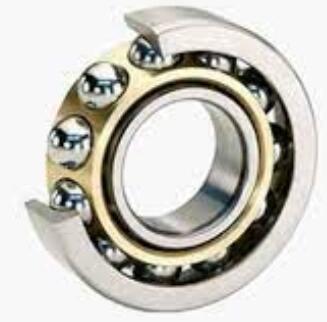The shaft parts of machine tools, especially the main shaft, are generally assembled with thrust ball bearings and rotate at very high speeds, sometimes generating high heat. If this phenomenon is not eliminated in time, it will lead to overheating of the angular contact ball bearing, and the temperature of the corresponding parts of the machine tool will rise, resulting in thermal deformation. , and will burn out the bearing.
The rated fatigue life refers to the total number of revolutions in which a group of bearings of the same type are operated under the same conditions, and 90% of the angular contact ball bearings do not appear peeling caused by rolling fatigue. When the rotation speed is constant, the rated fatigue life is usually expressed by the total operating time.
When studying the life of thrust ball bearings, not only fatigue life, but also several service limits should be considered according to the performance that the bearing should have. For example, the grease life of grease lubricated bearings. Noise life, wear life, etc., have different usage limits depending on the application, so experience limits are often selected in advance.
Therefore, it is difficult to know the real cause of the damage only by investigating the damage of the angular contact ball bearing. However, if you know the machinery used for the thrust ball bearing, the conditions of use, the structure around the bearing, and the situation before and after the accident, combined with the damage status of the bearing and several reasons, you can prevent similar accidents from happening again.
The judgment of whether angular contact ball bearings are usable is mainly determined by considering the degree of bearing damage, mechanical properties, importance, operating conditions, and the period until the next maintenance. If it has the following defects, it can no longer be used, and the thrust ball bearing must be replaced with a new one. There are cracks or nicks on any of the inner ring, outer ring, rolling elements, and cage.
Wear failure is one of the common failure modes of all kinds of bearings. According to the form of wear, it can be divided into common abrasive wear and adhesive wear.






